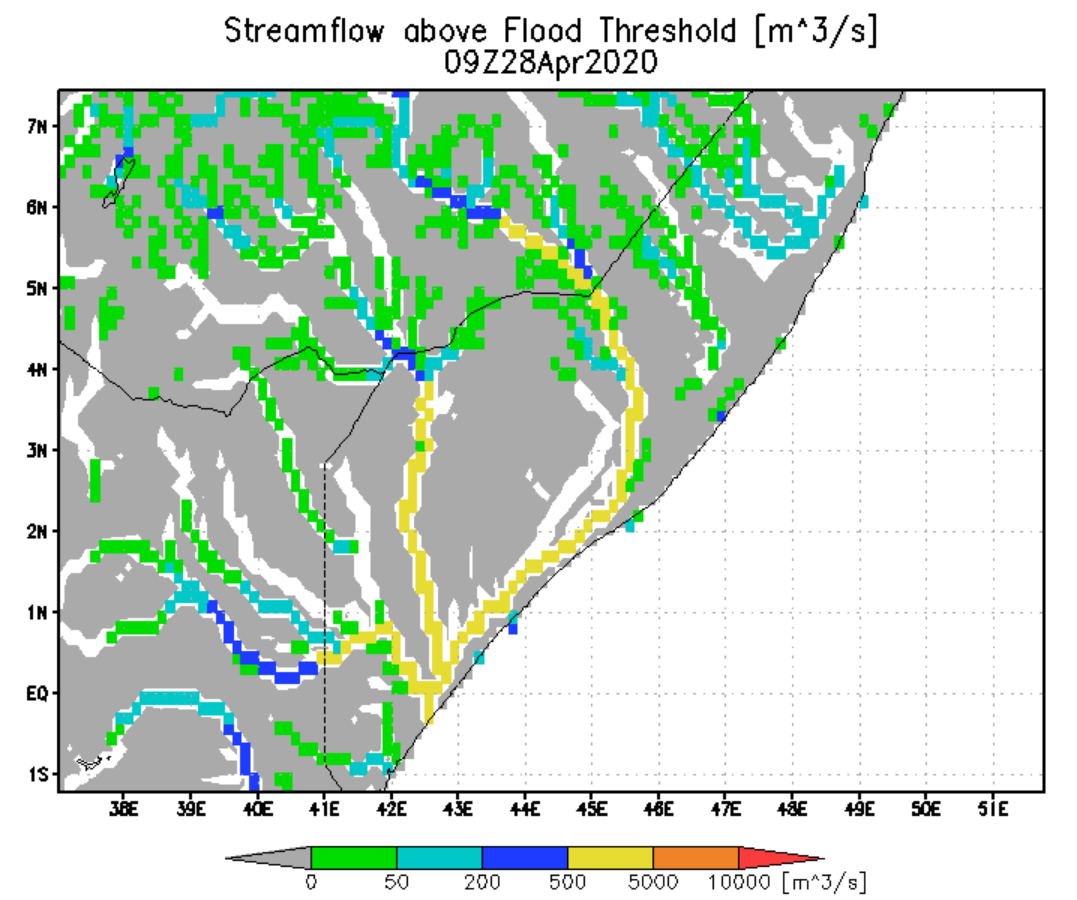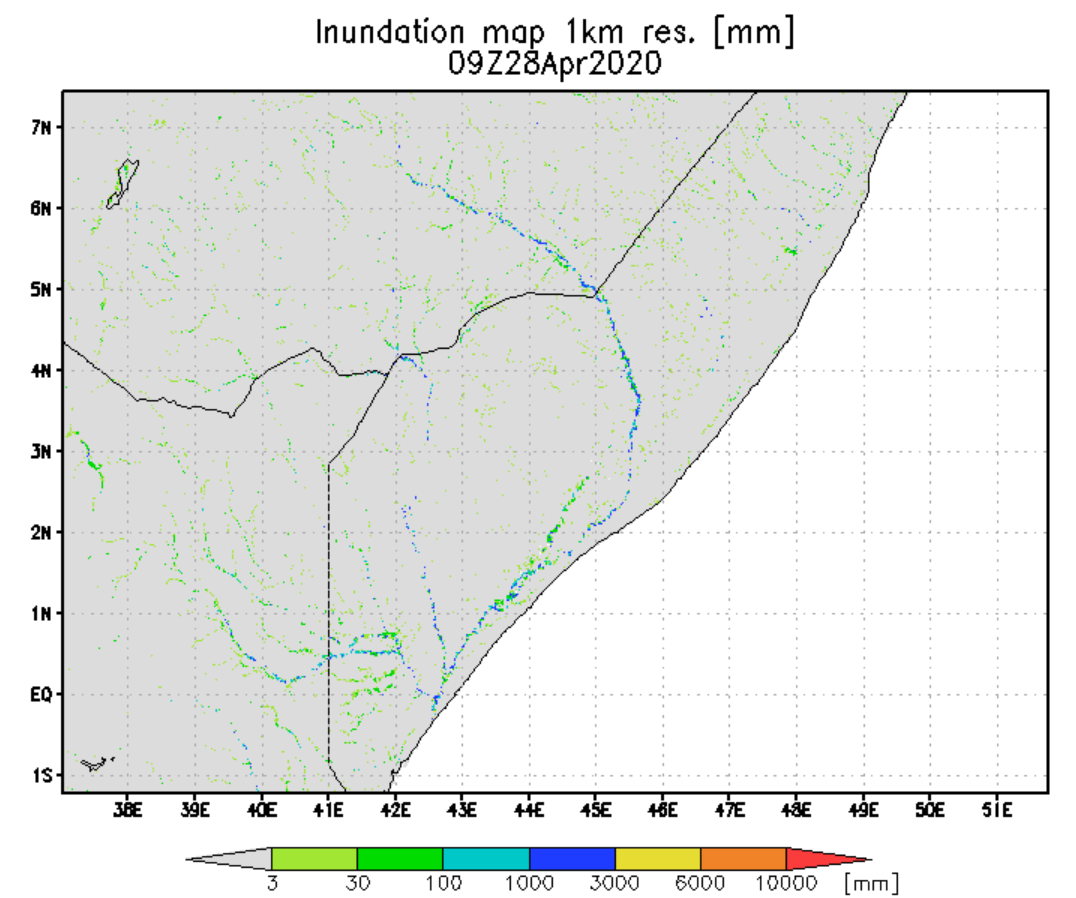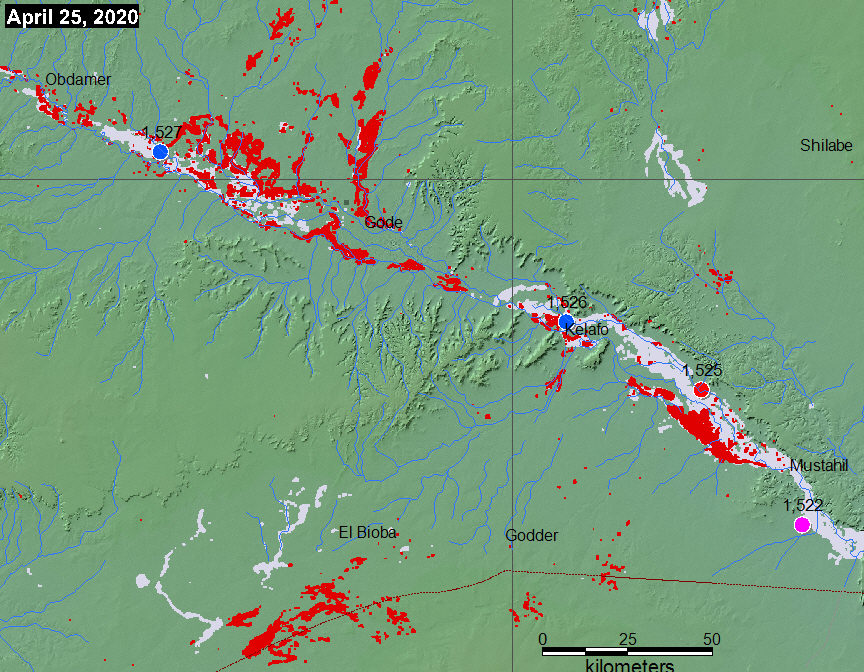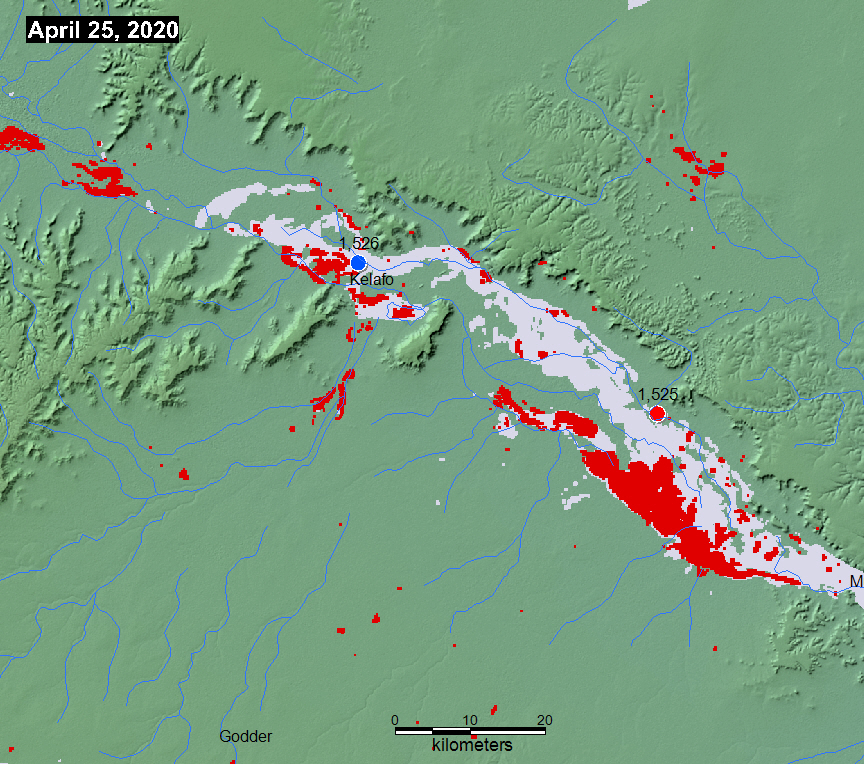







"Somalia – Deadly Flash Floods in North East 28 APRIL, 2020 BY FLOODLIST NEWS IN AFRICA, NEWS. Heavy rain has affected wide areas of Somalia since 20 April, causing rivers to rise and flash flooding. According to reports from the United Nations, tens of thousands of people have been affected or displaced.
On 27 April, massive flash flooding swept through the city of Qardho (also known as Gardo) in the northeastern Bari region, part of the autonomous Puntland state. At least 6 people have died and several others are thought to be missing. Hundreds of families have reportedly lost their homes.
The UN Office for the Coordination of Humanitarian Affairs (OCHA) reported on 24 April that “the 2020 Gu’ rains (April-June) have intensified across Somalia, triggering flash flooding in South West State, Jubaland, Bandir, Puntland and Somaliland from 20-23 April.” According to OCHA, heavy rain from 20 to 22 April caused flooding in Baidoa, South West State, Bay Region, destroying the shelters of more than 81,000 individuals (13,582 households) living in 73 settlements for Internally displaced people (IDPs). In Jubaland, as of 23 April, approximately 300 households were affected by the river flooding in Bardheere district. Some farmers in Bardheere town lost most of their crops. In Dhobley, Afmadow, ongoing rains affected about 2,000 displaced households in Danwadaag IDP settlement. The impacted households have moved to nearby areas and they do not have access to shelter. In Puntland, local authorities in Bossaso district reported that 4,500 people were affected by flash floods in the town and surrounding villages from 20 to 23 April.
More rain is likely, and Somalia Water and Land Information Management Project (SWALIM) warned of a high risk of flooding along the Shabelle over the coming days. In a report of 27 April, SWALIM said: “Heavy rains within the Shabelle basin both in Ethiopia and inside Somalia have led to a drastic increase in river levels along the Shabelle River. Most of the stations in the basin recorded 50mm to 100mm of rainfall in the last three days. In Belet Weyne and surrounding areas, river levels recorded a sharp increase in the last 72 hours, which has seen a rise of 3.50m to 6.00m as of today. This is only 0.50 m below the moderate flood risk level. The river level at Bulo Burti is 3.50m, which is 1.5m increase in the last 72 hours, and is 2.5m below the moderate flood risk level; however, this is likely to increase rapidly in the next few days. In Jowhar, there has been a 1.00m increase in river level in the last 24 hours following heavy rains in the area last night. A similar trend has been observed in Balcad and the lower reaches of the river. The river levels are expected to continue rising along the entire channel of Shabelle as more waters from the Ethiopian highlands are still streaming in”. Quoted from Flood List .




The Flood Observatory maintains a Global Active Archive of large flood events, 1985 to present. New major flood events are entered into this archive each week. A hand-drawn GIS polygon for each event outlines the region affected.
This event was selected for Observatory production of map and GIS data products.This web page and associated image and map (GIS) files become the permanent Flood Observatory record of the flood.
As part of collaborations with other organizations, including
GEO and the Global Flood
Partnership, the Observatory's maps are made available here to the public.
Geotif versions and GIS files are also available. With attribution, maps and
data can be used freely for non-commercial purposes. With permission, they can
be used for commercial purposes. Consult the Creative Commons Attribution-NonCommercial-ShareAlike 4.0
International License and Robert.Brakenridge or Albert.Kettner (at
Colorado.edu) if questions. Attribution for this map when Sentinel SAR data are
used: "Dartmouth Flood Observatory at the University of Colorado, from satellite
data provided by NASA and Copernicus/European Space Agency". When using GIS data
(see below) provided to DFO from other sources, please acknowledge original
source.
NASA Landsat 8 and Copernicus/ESA Sentinel SAR data if used in this map were obtained from the the U.S. Geological Survey Hazards Data Distribution System. and the Sentinels Science Data hub, respectively. Landsat 8 is jointly managed by NASA and the United States Geological Survey. Copernicus is supported by the European Commission. MODIS data are obtained from the NASA NRT Global Flood Mapping facility (surface water extents) and from NASA Worldview (image files); SUOMI/VIIRS image data are also retrieved from NASA Worldview.
Flood extent files (Shp or Mapinfo) supporting this Flood Event Map are located here.
These files may include high spatial resolution mapping such as from Sentinel or Landsat, or lower resolution files from MODIS. File names commonly include the sensor source (e.g., S1 for Sentinel 1, LS8 for Landsat, MODIS, Aqua, or Terra for MODIS) and the image date.
The NASA Earth Sciences Program, the Latin American Development Bank, the World Bank, the European Commission's Global Disaster Alert and Coordination System, GDACS, and Copernicus Emergency Management Service, the Google Earth Engine research awards program, the Committee on Earth Observation Satellites (CEOS) Disasters Working Group-Flood Pilot, the Japanese Space Agency, and the European Space Agency all have supported the Observatory's work via research grants and contracts or free satellite-derived data.
The Dartmouth Flood Observatory was founded by Robert Brakenridge in 1993 at Dartmouth College, Hanover, NH USA and moved to the University of Colorado, INSTAAR, CSDMS in 2010. The institutional support of both universities is gratefully acknowledged.
(counting since April 29, 2020)